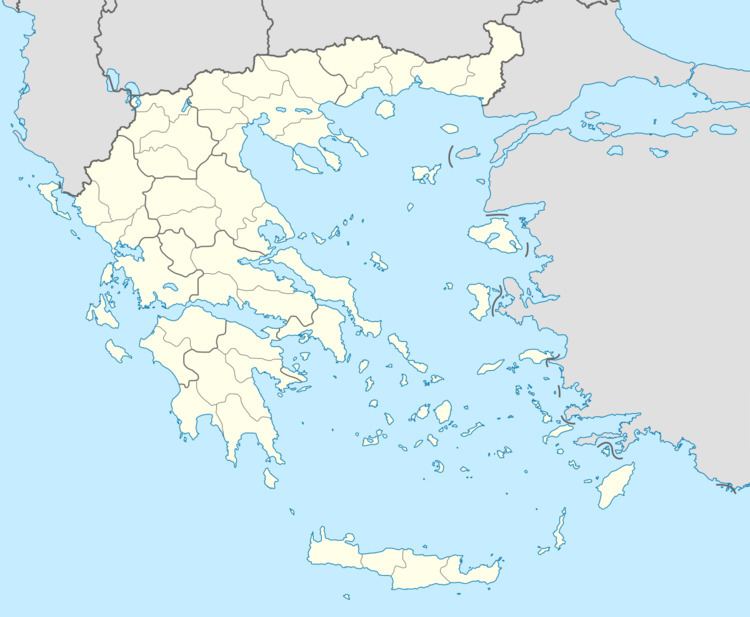Municipal unit Opountia | Time zone EET (UTC+2) Administrative region Central Greece | |
 | ||
Martino (Greek: Μαρτίνο) is a settlement in the regional unit of Phthiotis in Central Greece, and belongs to the municipality of Lokroi. Martino is located 120 km north from Athens, at an altitude of 210m. Neighbouring settlements are Malesina and Larymna.
Contents
- Map of Martino 350 05 Greece
- 3rd century BC
- The establishment of Martino in 1383 AD
- Ottoman rule
- From the Greek revolution of 1821 until the Liberation
- Martino from the establishment of the modern Greek state until today
- Attractions Tourism Cultural events
- References
Map of Martino 350 05, Greece
3rd century BC
In the area of Martino, the 3rd century BC, developed a city with the name "Voumelitea". The city flourished until the Byzantine period.
The establishment of Martino in 1383 AD
Martino founded around 1383 AD, as a settlement to its present location, and owes its name to Martin Mouzaki, leader of a (arvanitika and Greek-speaking) faction from the North Ipiros.
Ottoman rule
In 1466 13 households were in the Martino. In 1506 they increased to 46 and in 1521 they reached 77. In 1688 the households of Martino increased to 100, whereas before the Greek Revolution, in 1810, reached 300, all belong to Christian families.
The traveler Argyris Philippides, visited Locrida in 1815, wrote about Martino: Martino has three hundred Christian houses. Here the common language is Arvanitika. They speak of course and our language (Greek).
From the Greek revolution of 1821 until the Liberation
During the Greek Revolution of 1821, seven combatants from Martino referd: Dimos Angelis, Dimos Vergos, John Kollias, Dimos Kouros, Loukas Martinoaios, Giannakis Mitzou and Panos Theodoris.
One of the major battles during the Greek revolution in the region of Locrida was that of Martino, held on January 29, 1829. Vasos Mavrovouniotis with 6th body of 1000 men decimated the Turkish army.
The most important result of the victorious battle of the Greeks was that they prevented the Turkish plans for reclaiming the mainland Greece, as well as the program was able to Kapodistrias to negotiate under different and more favorable terms the borders of the newly established, independent Greek state.
Martino from the establishment of the modern Greek state until today
In 1840 Martino became the seat of the municipality Larymna. The seat moved to Proskynas in 1857, to return to Martino in 1872. The municipality except Martino, enclosed the villages: Pavlos, Traganas, Malesina, Pyrgos, Loutsi, Larymna, Tsouka, Proskynas and Mazi.
In 1882 starts the "Greek School" or "Greek Scholarcheion" in Martino. In the 1894 Atalanti earthquakes that shooked Locrida, caused Martino significant damage. In a total of 1434, 39 people were killed and 23 others injured, while 300 houses collapsed.
Martino became an independent community in 1912, having separated from the former municipality of Larymna. The new community included Martino and the village Tsouka (renamed to Metalleio Tsoukas in 1920). In 1929 the football club "Opountios Martinou" was established.
Another key feature here is the presence of several cultural groups. In 1976 founded the Cultural Association of Martino, "MO.SY.M" which seeks to support every kind of act of cultural interest.
At the 1997 Kapodistrias reform, Martino became the seat of the new municipality of Opountia. With the new administrative reform of the Greek state (Kallikratis plan), Martino joined the enlarged municipality of Locroi.
Attractions - Tourism - Cultural events
The old part of the village declared a protected monument.
There is also the Byzantine church of Agios Georgios with Byzantine frescoes and icons.
Other attractions of the village are the entrance of the temple of Pan and the ancient fountains "Tsorokos" and "Monachou".
Each November the 8th, the village celebrates the archangels Michael and Gabriel with various events in the central church.
